Layout and Features
We usually take a look at the layout and features section to evaluate just how well a certain manufacturer has constructed their board. Decent layouts can make the world of difference when it comes to installing components. Decent features integration, too, is necessary for clean cabling routing. The IC7-G was pretty good in this regard.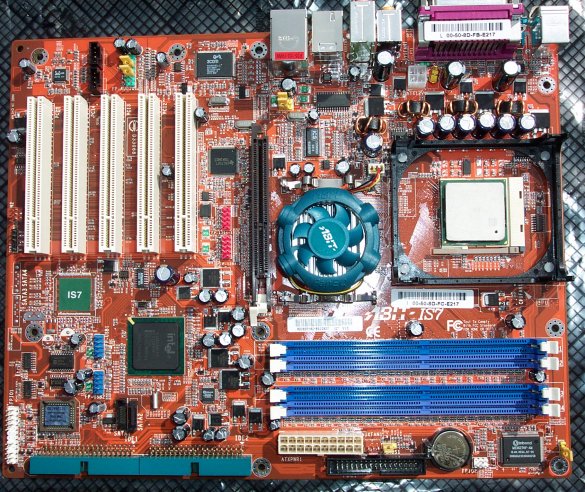
If you remember back to our BH7 review, you'll know that the PCB colour gave rise to either a love/hate relationship. Why is PCB colour even mentioned in a review ?. Simply because a number of users have windowed cases to show off their pride and joy. We'd have preferred a darker background.

Looking at the top-right side in detail, we see that ABIT really believe in a 4-phase PWM. Add to this the row of high-quality capacitors from Rubycon and you have the basis of what ABIT deem necessary for 200FSB (800QDR) running. Note that the 4-pin power plug is located in a rather inconvenient position, right next to one of the four fan headers on this board. There appears to be ample room surrounding the CPU socket to mount larger coolers, if that is your inclination.
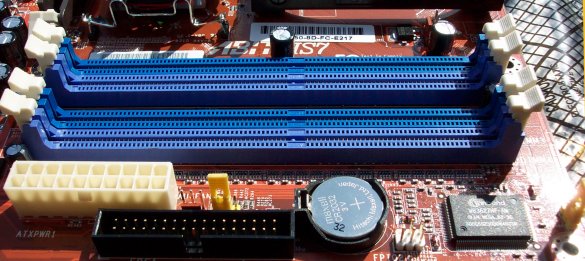
2 sets of DDR slots are the signature for any dual-channel chipset. Intel, through expert engineering, have managed to route all four DIMM slots via a single layer each, much as on the Canterwood. We hope this translates into lower eventual pricing. We appreciate the fact that there's a reasonable degree of room surrounding these slots. You'll see why a little later on. The CMOS battery and jumper have been moved up the board, so to speak. This seems to be a better location as far as accessibility is concerned. We also like the easy-to-grab jumper; no more fiddling with your nails now. The main power connector is a little way down the board. We found it to cause no problems with three separate power supplies.

The ICS 952607EF clock generator replaces ABIT's standard Realtek usage. This all-new clock gen' provides support for 200FSB+ CPUs, and also provides a number of weird and wonderful ratios for CPU, AGP and PCI buses respectively. The IC7-G arrived without an AGP locking mechanism. It's back now, as you can see. Whilst ABIT persist in including some sort of active Northbridge cooling, their FanEQ system gives some kind of control over the fan's speed, all controlled through the excellent hardware monitoring screen in BIOS. We'd have preferred a passive solution, a la ASUS and EPoX.
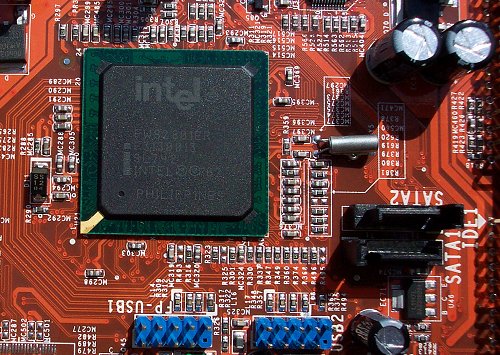
There's no PCI-based S-ATA support here, so Intel's ICH5/R is put to good use. It supports a couple of first-generation S-ATA ports in both independent and RAID0 formats, and you have the ability to add a second RAID-forming drive if you set up the initial boot drive correctly. The S-ATA support is native and on-chip, meaning that it won't take a chunk out of PCI bus bandwidth. S-ATA and P-ATA can both be used in a number of different combinations. You'll notice the blue headers afford us a further 4 USB2.0 ports in addition to the 4 integrated on the back panel. ABIT provide direct support for an extra 2 with their Multi-bracket.

Speaking of P-ATA ports, here they are, rotated to one side. Is there any real need to do this ?, the answer is probably no. It just gives the board a cleaner look once all the cables are in place. The distance of the secondary IDE port from the drives it will inevitably service may cause concern for users with larger cases. All seemed fine in a Lian Li PC60.

5 PCI slots and standard positioning of the 8x AGP slot allows ABIT to integrate a Texas Instruments 3-port FireWire controller in the space that's left bare. 2 red port headers are found right next door, unsurprisingly. The third port is integrated into the back panel. Using just a single bracket for both FireWire and USB2.0 connectivity may cause cabling problems; it'll certainly make the routing look untidy.
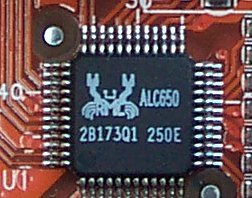
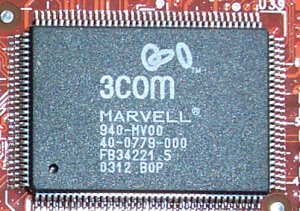
We know all about the virtues of the Realtek ALC650 6-channel CODEC. ABIT try to maximise its usefulness by integrating two optical (in/out) connections on the packed back panel. This motherboard is identified as the IS7, yet it features Gigabit LAN from 3COM. The 3C940 is still a PCI-based 10/100/1000 LAN. ABIT must have opted for this over the more elegant Intel CSA LAN on the simple yet important basis of cost. 3COM are rumoured to supply manufacturers the 3C940 controller 30% cheaper than Intel's CSA solution.

An impressive line up of both legacy and newer, high-speed components. One of the better I/O panels around.









